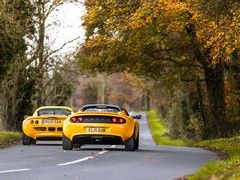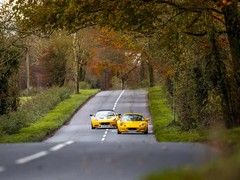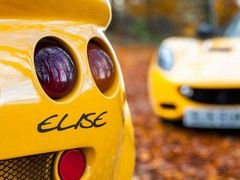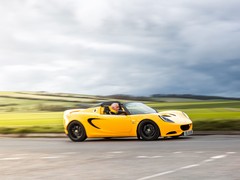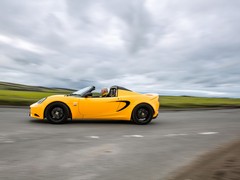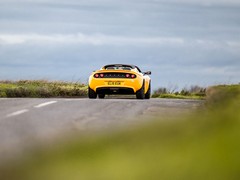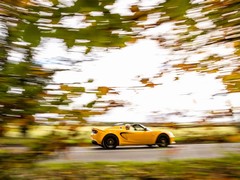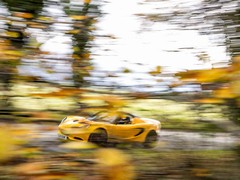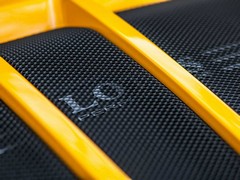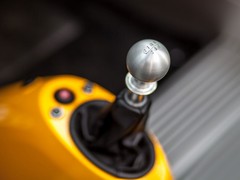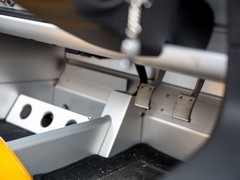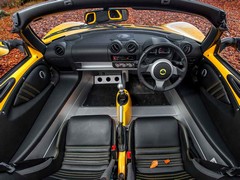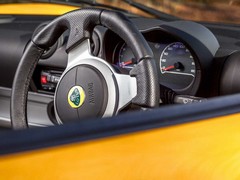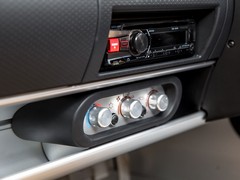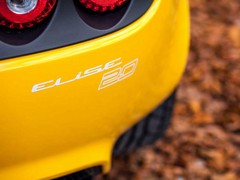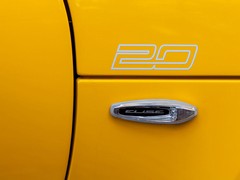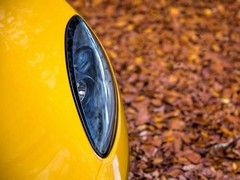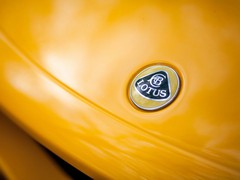Lotus Elise 20th Anniversary vs. S1 Elise
Guest appearance by 20th Anniversary Elise at our S1 PH Heroes shoot offers chance to see how far it's come
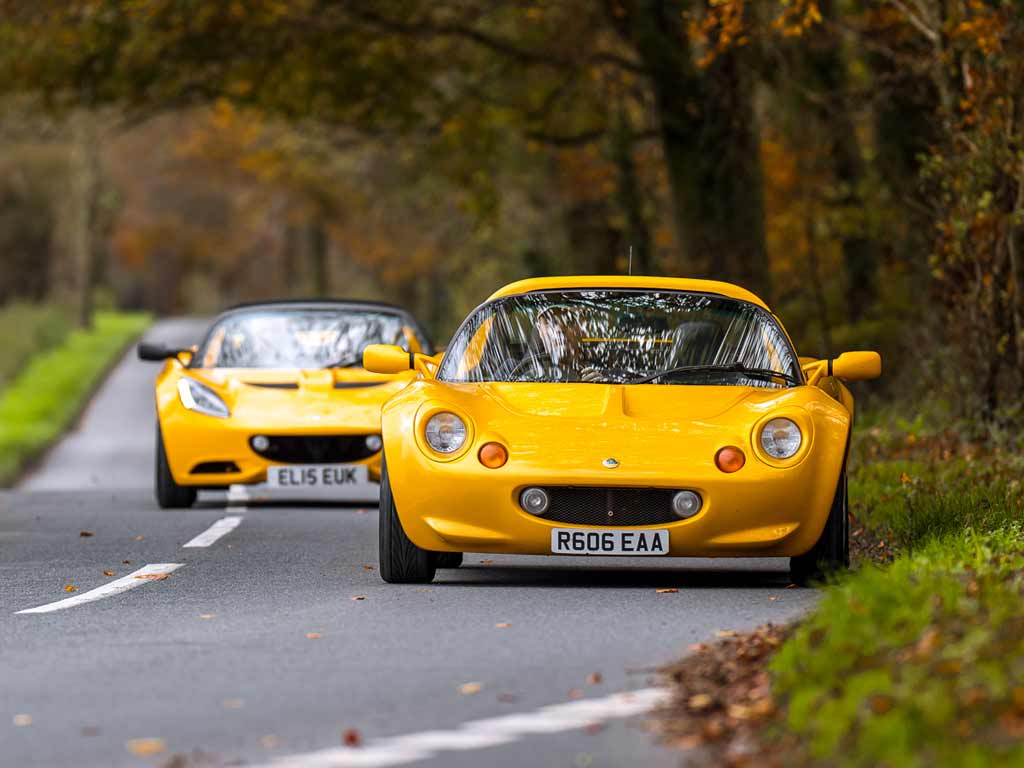
Hard, isn't it?
Because while the Elise has become heavier and faster and gained more trim over time, the fundamentals have never really changed. Some people will choose to see this as proof of the relative paucity of Lotus's R&D budget, and its inability to create something substantially different. Others will regard it as confirmation of how good the fundamental Elise recipe has always been.
So which is it?
Some brave fence-sitting here, the truth being somewhere between those two extremes. But we gladly took the opportunity to compare and contrast the S1 Elise that we used for our recent Heroes story with a nearly new Elise 20th Anniversary Special Edition that owner Peter Wright offered to bring along on the day. While I can't say we came to any definitive conclusion over which was best, it was certainly fun trying to find out.
Parked together, the similarities between both cars are far more striking than the differences. Dimensions and proportions seem almost identical; the styling has subtly altered over the years, but it's close enough to confirm parentage without any need for DNA testing. Even wheels and tyres have barely grown over the years; during the same period over which the rims of mainstream models have expanded by two or three inches the modern Elise can practically wear the original's jeans: the S1 has 165/55 R15s at the front and 225/45 R16s at the rear, the 20th Anniversary has 175/45 R16s at the sharp end and 225/45 R17s at the rear.
Yet there are plenty of differences too. Firstly, of course, the increase in weight - the 20th Anniversary's official 896kg kerbweight represents a 173kg increase over the S1. That's because there's more equipment - ABS, leather seats, airbags, even the option of air conditioning - but also because there's more trim. Much as I love the minimalist cabin of the S1 Elise it would be churlish to deny that the 20th Anniversary is much better trimmed and finished; indeed in some cases it's trimmed and finished in areas the original car just left blank. I'd forgotten just how fiddly an S1's roof is, too. The car we borrowed had a ripped hood so we didn't use it, but the sight of the poppers and fasteners triggers a flashback of getting drenched while trying to refit canvas to a 111S during a sudden downpour on a Welsh hillside. By contrast the clip-roll-clip hood of the later cars seems close to power operation for its ease of use.
To Berkshire!
None of this alters the fact that, from the point of view of somebody who had never encountered a Lotus Elise, these are two cars with an overwhelming amount in common. Fortunately our chosen location of the Berkshire Downs quickly prove to be an ideal location for teasing out some telling differences as well.
We're using the three-sided route between the villages of Lambourn, Childrey and Ashbury, one that offers a decent microcosm of a more famous driving triangle in North Wales, with everything from fast sweepers to the sort of yumps that a WRC car would slow for.
The S1 feels light and agile in a way that little else does, minimal mass disguising the 1.8-litre K-Series' relative lack of firepower. There's a finesse to the way it does everything, the way that every input, however small, yields a discernible result; and the way that everything gets relayed back through the steering and tailbone telemetry. It's a sensory barrage that effectively disguises the fact that the S1 isn't necessarily travelling particularly quickly; you can thrash it hard enough to give yourself back-off vibes and then glance at the speedo to find that you're not even being officially naughty.
Not so the 20th Anniversary, which requires much more discipline. With getting on for twice the power it's no surprise that the it feels much quicker, the relentless urge delivered by its supercharged Toyota engine meaning you're never more than a toe-stretch away from a stern telling off from a magistrate. Big whoop, that's the story of pretty much every other performance car over the same timescale.
But the extra urge means it's got more of everything else, too - more grip, despite the relatively modest increase in tyre size, weightier steering, keener brakes and tauter suspension. Even with Lotus's electronic throttle control system standing sentinel you need to treat the right pedal with a measure more respect. Responses are every bit as keen, but a small part of the adjustability and directness of the S1 has been lost to the increase of everything else. That additional performance means you have to travel quicker to experience the same level of reward.
To get back to that comfortable fence, it's not better or worse, but it is surprisingly different.
Elise-ium
Have you spotted the obvious flaw in all this? The 20th Anniversary is brawnier and quicker, but - for those in search of minimalist thrills - Lotus does still produce an Elise that is far closer to the spirit of the S1. The 1.6 Club Racer has a 136hp engine, a 6.5-second 0-62mph time and a 127mph top speed, all of which are within a winter sneeze of the numbers claimed for the original car, although it's still more than 100kg over on weight. (For what it's worth, the oft-criticized £30,990 price translates to just over £18,000 in 1996 prices when run through an online calculator as well.)
Yet the 20th Anniversary is still a valid comparison. Because the centre of the Elise range has moved so far upwards since the original car was released, but also because the referential name makes it impossible not to compare it with the original. There are no big revelations to deliver beyond the fact the Elise started out great, and it's still pretty damn good.
Photos: Tim Brown
[Source: ThisisMoney]
 . Nice article for undoubtably the best road sportscar in the last 20 years. (Ignoring this TVR website origins)
. Nice article for undoubtably the best road sportscar in the last 20 years. (Ignoring this TVR website origins)The two modern versions are brilliant, and incredible value at £30-40k. Adding lightness costs money.
The S1 remains a jewel with the lightweight K, yet today's vanilla 1.6 variant has all the legal performance needed for delightful fun and engagement. The SC delivers storming levels of performance 0-60 in 4 secs is strong and still well under a ton for chuckability not found elsewhere. Pity the overvalued £ cant be good for export business, unfortunately the success of the city of London upsets manufacturing in the nether regions > twas always so. Curious about reliability figures too, must be pretty good compared to other stuff and depreciation remains unbeatable - they probably could lease a few more but then you are into volume and dumping. There's even the Tesla variant.
Still the best sportscar and a worthy continuation of the sixties Elan. Less is always more.

Gassing Station | General Gassing | Top of Page | What's New | My Stuff

